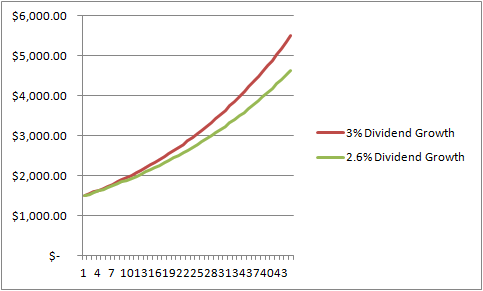How Do ETF Dividends Work
Post on: 27 Май, 2015 No Comment

The theme of dividend investing has taken portfolios by storm, as ultra-low rates have forced investors to seek stable income elsewhere. As such, the growth of dividend ETFs has rapidly accelerated in recent years as investors have shown an increased appetite for these products. When it comes to dividend stocks, most investors have a firm grasp on the process of distributions and the key dates surrounding the payout, but the picture can get a little cloudy with an ETF that holds securities that all pay dividends at different times [for more ETF news and analysis subscribe to our free newsletter ].
ETFs and Dividends
For the most part, dividends are pretty straight-forward when it comes to ETFs. Well start off with the most basic example. The SPDR S&P 500 ETF (SPY, A ) is not only the most popular ETF in existence, but also a dividend-payer. According to its prospectus, the fund puts all dividends into a non-interest bearing account until its comes time to make a payout.
The ex-dividend date for SPY is the third Friday of the final month of a fiscal quarter (March, June, September, December). If that day should happen to not be a business day, then the ex-dividend date will fall on the day prior. The record date comes two days prior to the ex-dividend date. At the end of the quarter, SPY pulls the dividends from the non-interest bearing account and distributes them to its investors. The chart below displays when SPYs top five dividend-paying holdings distributed their respective dividends versus when SPY itself made its distribution.

Dividends Reinvested
Holding the dividends in cash is one of two of the most popular strategies in the ETF dividend world; the second is reinvesting the dividends back into the fund. A prime example of this comes from the Core S&P 500 ETF (IVV, A- ). This popular product reinvests the dividends it receives back into the fund, creating something of a leverage for the product (probably around 1.001X) as it is investing with borrowed money.
When it comes time to make a payout, the fund pays out the dividends it accumulated; if IVVs price has jumped during this period there is extra principal left over that was made from reinvesting the dividends, which is left in the fund. Because of this, IVV will tend to slightly outperform SPY in bull stretches despite employing the exact same strategy. Note that this process works in reverse, as a bear market will watch IVV perform slightly worse than its larger counterpart. The following table displays the funds annual returns for the last five years:














